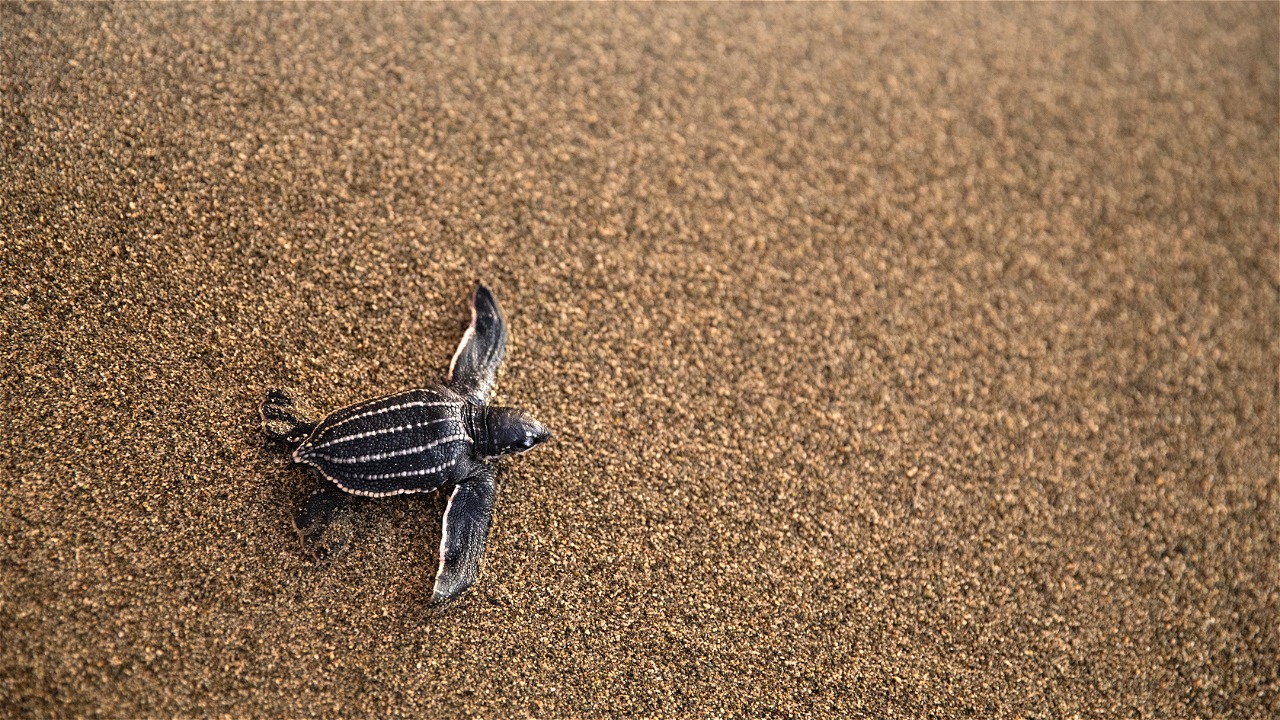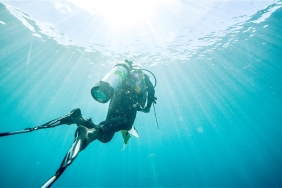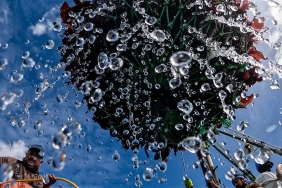EXPLORING THE GENETIC CONNECTIVITY OF BURU ISLAND LEATHERBACK TURTLES
By: Syarif Yulius Hadinata - Marine Species Assistant WWF Indonesia Inner Banda Arc Subseascape
Genetic connectivity tracing in sea turtles is one of the latest techniques to reveal the origin of utilized turtles. In 2018, WWF Indonesia - Inner Banda Arc Subseascape conducted a Deoxyribo Nucleic Acid (DNA) study on leatherback turtles (Dermochelys coriacea)that came to lay their eggs at the Northern Buru Island Turtle Nesting Beach. This research was conducted to determine the structure of genetic composition, connectivity relationships between nesting beaches and to determine the type and origin of turtles traded on Buru Island.
The first step of the DNA research began with the Turtle DNA Sampling Training conducted at Waspait Resort Buru (5/3). There were 11 participants from Maluku BKSDA, LPSPL Sorong, and WWF Indonesia who were expected to help each other in sampling. Not only theory, drh. Maulid Dio Suhendro, M. Si from Udayana University as the speaker directly invited participants to practice sampling. Unfortunately, leatherback turtles have not been found, only 2 Olive Ridley turtles were found and used as the object of turtle DNA sampling practice.
"DNA sampling is important in the protection of sea turtles by being accompanied by competent personnel, especially in the context of tracking sea turtles caught in the patrol activities for the circulation of wild plants and animals commonly carried out by BKSDA. So that the circulation of illegal turtle trade networks can be mapped in order to be able to carry out follow-up both in the form of turtle protection socialization and for law enforcement aspects, "explained Zulham, Functional Staff of Forest Ecosystem Control at Maluku BKSDA who participated in the activity.
Sea turtle sampling should be done after the turtle has finished laying eggs so as not to disturb the nesting process. In general, the turtle sampling process begins with measuring the length and width of the carapace. Then take skin tissue samples on the left flipper for uniformity of Buru Island leatherback turtle sample collection. The sample taker must be dexterous because after laying eggs the turtle will move back to the sea. Samples taken were put into a tube and marked with the coding WWF_BR_NB_ddmmyy_A1 and so on. Once sampling was complete, a microchip or pit tag was attached to ensure that no duplicate samples were taken. Documentation is done by filling in the sample collection form that has been inputted in the Akvo Flow application to facilitate database processing. The collected turtle DNA samples then underwent isolation, extraction, amplification, electrophoresis and sequencing, and analysis.
Conservation of sea turtles is not only limited to protecting them because of the benefits of sea turtles that actually without realizing it, sea turtles also protect humans. Sea turtles have an ecological role spreading fertility in the sea and helping coral reef growth by preying on sponges, which are competitors of coral reefs. In addition, sea turtles also maintain fisheries stocks by preying on jellyfish, which are predators of baby fish (juvenile) and pruning old seagrass strands to make it easier for young seagrasses to grow so that seagrasses regenerate. Therefore, the extinction of sea turtles will disrupt the food chain in nature and can actually harm humans in terms of the availability of fish and other marine commodities.
Meanwhile, in terms of socio-economic aspects, sea turtles have an important meaning for coastal communities if their utilization is carried out in a sustainable manner as stated in Law No.5/1990. For example, from the ecotourism sector, sea turtles can be an attraction for tourist visits. However, the utilization of sea turtles is contrary to the benefits above because there is still hunting and theft of sea turtle eggs. As a result, there is a decline in population that can lead to the extinction of this charismatic animal.
Kasim Wayolu, a resident of Wamlana Village who is part of the Monitoring Team said, "I have been taking turtle eggs since I was a child, and I only saw the hatchlings after the monitoring. This is what we must protect so that the eggs continue to hatch. I have been going to the beach almost every day. The only difference is that we used to take them and now we protect them". It is this kind of awareness that must be spread for the preservation of sea turtles on the North Buru Island Turtle Nesting Beach. This partnership work through DNA research will be an important part of conservation strategy development and regional and multi-national law enforcement collaboration. In this process, the role of local villagers will be paramount, whether they want to protect the turtles or not.





